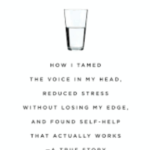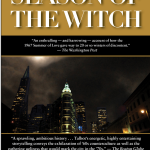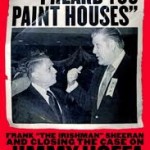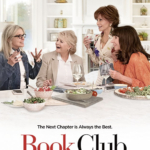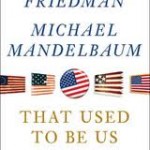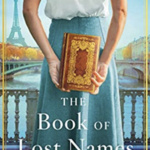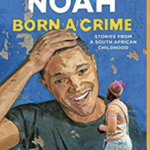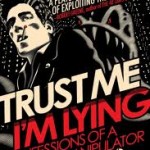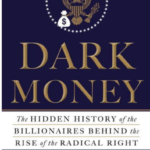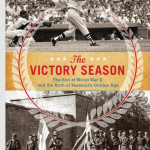March 9th, 2014 — 7:47pm
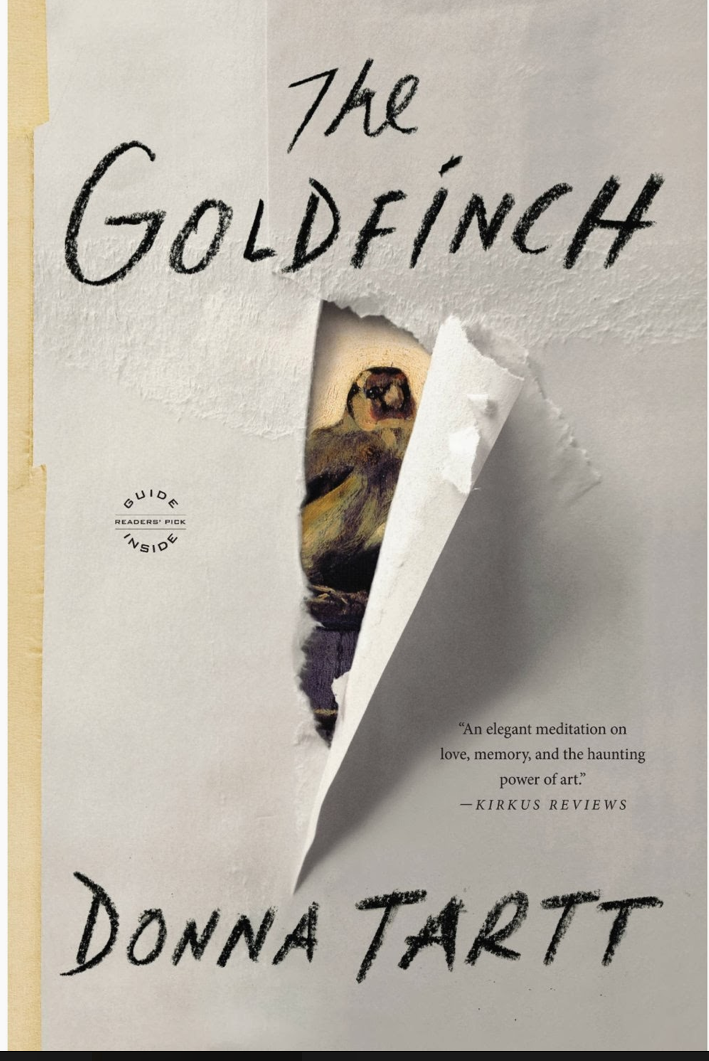 GOLDFINCH by Donna Tartt– I chose to read this book shortly after it emerged on the NY Times Best seller list and I read that people were overcrowding the Frick Museum in New York City where the Goldfinch painting by Carel Fairitus was being exhibited because it was the subject of this new popular book. For some reason that struck my fancy and I downloaded it on my iPod. Now having having completed the book, I read about the author and learned that she took 10 years between this and her last well received novel to complete this book. Also, the critics are comparing her style to Charles Dickens (who was never exactly my cup of tea). Having said this and feeling the book was definitely too long, I will give the author credit for an interesting plot and some good in-depth character development, which is always appealing to me. The novel is told in the first person which is an accepted literary mechanism but it seemed somewhat artificial to me when the writer in this case is describing exquisite details, memories, dialogue etc. that no one could possibly recall. The voice of this novel is Theo Decker. He is an early adolescent who is visiting a museum with his divorced mother when there is a tremendous bomb explosion. Young Theo finds himself alone in one part of the decimated museum with a dying old man who gives him his valuable ring and the painting (the novel namesake) which has survived the blast barely unscathed. His mother has died in the explosion and a wealthy Manhattan family of a school friend takes in Theo. Theo follows the directions of the dying old man from the museum and finds his relative, a kindly middle-aged man named Hobie. He gives him the ring and is taken under wing by him and taught all about furniture restoration which is his trade and profession. Throughout the book there are more details about furniture restoration than you would ever want to know. I am sure it is metaphoric or symbolic in some way, which I never understood. Theo meets Pippa, the granddaughter of the older man from the museum who is staying with Hobie while recovering from her injuries from the explosion. Theo had briefly seen her before the blast and was initially fascinated by her and subsequently develops a great love for her despite the fact that she is sent to school in another country and only periodically visits Hobie. Theo’s father then appears on the scene and takes him to live with him and his girlfriend in a run down area in Las Vegas. Theo all this time is hiding the famous painting as he tried to do throughout most of the book. Theo meets a young man with a Russian background by the name of Boris who becomes his closest friend and they spend high school years together. They will reunite later in the book. These two young men use a tremendous amount of drugs and alcohol throughout the book. We see the acute effects on them but for some reason, which didn’t make sense to me, we don’t see the deterioration and effects of large amounts of the substances, which they used. Theo and Boris have and thrilling adventure in Europe which has to do with the painting. As mentioned, all the characters with whom we spend time are consistent and well developed. The author obviously spent much time thinking about them and how to present them to us. She also is trying to share with us her philosophy of life. She not only demonstrates this in her storyline but also finds places in the novel to expound in great detail. No place is this more apparent than at the conclusion of the book where she goes on for what seems like numerous pages reviewing the lesson of life that Theo has learned. It didn’t work for me but remember I didn’t love Charles Dickens.
GOLDFINCH by Donna Tartt– I chose to read this book shortly after it emerged on the NY Times Best seller list and I read that people were overcrowding the Frick Museum in New York City where the Goldfinch painting by Carel Fairitus was being exhibited because it was the subject of this new popular book. For some reason that struck my fancy and I downloaded it on my iPod. Now having having completed the book, I read about the author and learned that she took 10 years between this and her last well received novel to complete this book. Also, the critics are comparing her style to Charles Dickens (who was never exactly my cup of tea). Having said this and feeling the book was definitely too long, I will give the author credit for an interesting plot and some good in-depth character development, which is always appealing to me. The novel is told in the first person which is an accepted literary mechanism but it seemed somewhat artificial to me when the writer in this case is describing exquisite details, memories, dialogue etc. that no one could possibly recall. The voice of this novel is Theo Decker. He is an early adolescent who is visiting a museum with his divorced mother when there is a tremendous bomb explosion. Young Theo finds himself alone in one part of the decimated museum with a dying old man who gives him his valuable ring and the painting (the novel namesake) which has survived the blast barely unscathed. His mother has died in the explosion and a wealthy Manhattan family of a school friend takes in Theo. Theo follows the directions of the dying old man from the museum and finds his relative, a kindly middle-aged man named Hobie. He gives him the ring and is taken under wing by him and taught all about furniture restoration which is his trade and profession. Throughout the book there are more details about furniture restoration than you would ever want to know. I am sure it is metaphoric or symbolic in some way, which I never understood. Theo meets Pippa, the granddaughter of the older man from the museum who is staying with Hobie while recovering from her injuries from the explosion. Theo had briefly seen her before the blast and was initially fascinated by her and subsequently develops a great love for her despite the fact that she is sent to school in another country and only periodically visits Hobie. Theo’s father then appears on the scene and takes him to live with him and his girlfriend in a run down area in Las Vegas. Theo all this time is hiding the famous painting as he tried to do throughout most of the book. Theo meets a young man with a Russian background by the name of Boris who becomes his closest friend and they spend high school years together. They will reunite later in the book. These two young men use a tremendous amount of drugs and alcohol throughout the book. We see the acute effects on them but for some reason, which didn’t make sense to me, we don’t see the deterioration and effects of large amounts of the substances, which they used. Theo and Boris have and thrilling adventure in Europe which has to do with the painting. As mentioned, all the characters with whom we spend time are consistent and well developed. The author obviously spent much time thinking about them and how to present them to us. She also is trying to share with us her philosophy of life. She not only demonstrates this in her storyline but also finds places in the novel to expound in great detail. No place is this more apparent than at the conclusion of the book where she goes on for what seems like numerous pages reviewing the lesson of life that Theo has learned. It didn’t work for me but remember I didn’t love Charles Dickens.
1 comment » | FG - Fiction General
February 16th, 2014 — 12:09pm
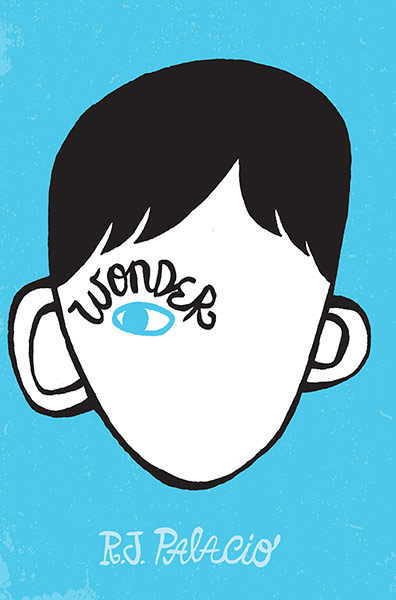 I decided to read this book because I had heard it was a very emotional and wonderful book from multiple people. This book is very inspiring and very different because it is written thoughtfully and caring through the eyes of someone you don’t see every day. Auggie, the main character, who feels like any other ordinary little boy inside, isn’t seen the same way by everybody else because he has a deformed face. Auggie has always been homeschooled and this book is about Auggie’s journey through his first year attending a real school—middle school. It is probably bad enough to be a new kid, let alone having a deformed face and being at a real school for the first time in your life—well imagine it would be like for Auggie.
I decided to read this book because I had heard it was a very emotional and wonderful book from multiple people. This book is very inspiring and very different because it is written thoughtfully and caring through the eyes of someone you don’t see every day. Auggie, the main character, who feels like any other ordinary little boy inside, isn’t seen the same way by everybody else because he has a deformed face. Auggie has always been homeschooled and this book is about Auggie’s journey through his first year attending a real school—middle school. It is probably bad enough to be a new kid, let alone having a deformed face and being at a real school for the first time in your life—well imagine it would be like for Auggie.
What I really liked about Wonder is that the author, R.J. Palaciodid a great job of capturing Auggie’s perspective and she also showed the perspectives of other people in Auggie’s life by telling the story from the views of other people in Auggie’s life. I recommend this book because it really makes the sadness, happiness, enjoyment, pleasure, and emotion come to life in the reader’s eyes and in the character’s eyes. I recommend this book to people who like to see real life—both the hardships and the happy moments.
1 comment » | FG - Fiction General, T - Recommended for Teenagers, Uncategorized
February 11th, 2014 — 1:09am
The Bully Pulpit: Theodore Roosevelt, William Howard Taft and the Golden Age of Journalism- by Doris Kearns Goodwin I always thought that I was fairly well educated in American history but now after encountering this magnificent book I realize how little I knew about two great American presidents, Teddy Roosevelt and William Howard Taft. Doris Kearns Goodwin, more recently known for Team of Rivals about the presidency of Abraham Lincoln, chose with good reason to couple Roosevelt and Taft in this massive writing project. My electronic reader had about 4870 pages (this will vary with the size of the screen and font) and Amazon showed the hard cover version having 910 pages including the index. In fact by my count almost 15% of the book were footnotes and the index, which is keeping with the scholarly approach of Ms. Goodwin. This does not mean that this is a slow or dry read. To the contrary, the reader is drawn into the lives of these fascinating men and the time period in which they were making American history. I had to remind myself that I was not reading a novel. Quite early in the book Ms. Kearns has chosen to demonstrate that these two men had become very good friends and in fact Roosevelt was of prime importance in allowing Taft to follow him as President after his two terms. But shortly after Taft became President, there occurred a rift between the two that essentially at one point made them bitter enemies. The book exams each of their lives and follows their trajectories. This is done by alternating chapters that shows in depth the various stages of their lives. In the course of seeing their individual assents to the top, we learn they became friends, colleagues and the nature of the extremely close relationship that developed. Ultimately we also were able to follow the lives of these two men and their careers, which is the story of the progressive movement in the United States. It also tells the amazing story of Sam McClure and the muckraker journalists. In a world where there was no mass media, no radio, television or Internet; a magazine by the name of McClure’s Magazine was extremely popular. The magazine evolved from the leading literary magazine to one that provided extensive investigations and in-depth exposes, which led to political and social changes in the regulation by the government of several monopolistic industries. Some of the respected authors and journalists who wrote for McClure include Robert Louis Stevenson, Rudyard Kipling, and Sir Arthur Conan Doyle. When McClure moved to important political issues his authors included Ida Tarbell who told the story behind John Rockefeller and the Standard Oil monopoly, Ray Baker who wrote about the Right to Work and the terrible treatment of those who attempted to organize labor and Lincoln Steffens who was best known for his writing about political corruption. There was also a discussion about the well known muckraker Upton Sinclair whose novel The Jungle told of the horrors of the meatpacking industry. It is most striking how these writers not only had great impact on the public but also how receptive Teddy Roosevelt was to meet them in person and learn first hand of their investigations. This all led to the major reforms that were started by Roosevelt and carried forth by Taft and how Congress was pressured to respond with the needed legislation. In order to appreciate the depth and insight that Doris Kearns Goodwin was able to achieve about these two Presidents and the events of the day, you have to understand the sources, which she used. As would be expected, there are numerous quotes from the newspapers of that time which followed the contemporary political events and personalities. The personal method for communication was letter writing. A great deal of the personal and official correspondence of these figures has been preserved. There also are available to historians and writers, the diaries of many of them as well as those of people close to them which often reflect the details of events as well as the emotional tone, which occurred in various interactions. Eventually many of the key players wrote autobiographies and others wrote biographies about them. Kearns and her fact gathering team pieced things together so the book read like a well-written novel I imagine that different readers will come away with varied impressions, particularly about these two U.S Presidents. It does seem that I now know more about them than I do about many important people in the news today and probably more than I do about many everyday people with whom I interact. As much as I admire Teddy Roosevelt and appreciate his accomplishments and determination to do what he believed was right for this country (and was subsequently proven to be correct), I also appreciate his shortcomings. He became a national hero when he led, the Rough Riders into Cuba to needlessly risk his life and others which was more likely a personal ego trip. His break with his very close friend William Howard Taft was clearly his doing because he felt slighted for clearly insignificant reasons. Even his formation of the ill-fated Bull Moose Party which cost Taft the chance to serve a second term seemed to be another ego trip. On the other hand, Taft came across to be a very sincere person who not only cared about the people he served but had the ability to feel empathy for the individuals in his life including Roosevelt. It is ironic that Taft who would have chosen being Chief Justice of the Supreme Court over being president, which he probably never really wanted to be, never-the-less accomplished so much in his one term as president and then fortuitously had a chance to serve as Chief Justice in his later years. These are just a few samplings of the type of insights you may get as you read about these men and the history of their times.
I always thought that I was fairly well educated in American history but now after encountering this magnificent book I realize how little I knew about two great American presidents, Teddy Roosevelt and William Howard Taft. Doris Kearns Goodwin, more recently known for Team of Rivals about the presidency of Abraham Lincoln, chose with good reason to couple Roosevelt and Taft in this massive writing project. My electronic reader had about 4870 pages (this will vary with the size of the screen and font) and Amazon showed the hard cover version having 910 pages including the index. In fact by my count almost 15% of the book were footnotes and the index, which is keeping with the scholarly approach of Ms. Goodwin. This does not mean that this is a slow or dry read. To the contrary, the reader is drawn into the lives of these fascinating men and the time period in which they were making American history. I had to remind myself that I was not reading a novel. Quite early in the book Ms. Kearns has chosen to demonstrate that these two men had become very good friends and in fact Roosevelt was of prime importance in allowing Taft to follow him as President after his two terms. But shortly after Taft became President, there occurred a rift between the two that essentially at one point made them bitter enemies. The book exams each of their lives and follows their trajectories. This is done by alternating chapters that shows in depth the various stages of their lives. In the course of seeing their individual assents to the top, we learn they became friends, colleagues and the nature of the extremely close relationship that developed. Ultimately we also were able to follow the lives of these two men and their careers, which is the story of the progressive movement in the United States. It also tells the amazing story of Sam McClure and the muckraker journalists. In a world where there was no mass media, no radio, television or Internet; a magazine by the name of McClure’s Magazine was extremely popular. The magazine evolved from the leading literary magazine to one that provided extensive investigations and in-depth exposes, which led to political and social changes in the regulation by the government of several monopolistic industries. Some of the respected authors and journalists who wrote for McClure include Robert Louis Stevenson, Rudyard Kipling, and Sir Arthur Conan Doyle. When McClure moved to important political issues his authors included Ida Tarbell who told the story behind John Rockefeller and the Standard Oil monopoly, Ray Baker who wrote about the Right to Work and the terrible treatment of those who attempted to organize labor and Lincoln Steffens who was best known for his writing about political corruption. There was also a discussion about the well known muckraker Upton Sinclair whose novel The Jungle told of the horrors of the meatpacking industry. It is most striking how these writers not only had great impact on the public but also how receptive Teddy Roosevelt was to meet them in person and learn first hand of their investigations. This all led to the major reforms that were started by Roosevelt and carried forth by Taft and how Congress was pressured to respond with the needed legislation. In order to appreciate the depth and insight that Doris Kearns Goodwin was able to achieve about these two Presidents and the events of the day, you have to understand the sources, which she used. As would be expected, there are numerous quotes from the newspapers of that time which followed the contemporary political events and personalities. The personal method for communication was letter writing. A great deal of the personal and official correspondence of these figures has been preserved. There also are available to historians and writers, the diaries of many of them as well as those of people close to them which often reflect the details of events as well as the emotional tone, which occurred in various interactions. Eventually many of the key players wrote autobiographies and others wrote biographies about them. Kearns and her fact gathering team pieced things together so the book read like a well-written novel I imagine that different readers will come away with varied impressions, particularly about these two U.S Presidents. It does seem that I now know more about them than I do about many important people in the news today and probably more than I do about many everyday people with whom I interact. As much as I admire Teddy Roosevelt and appreciate his accomplishments and determination to do what he believed was right for this country (and was subsequently proven to be correct), I also appreciate his shortcomings. He became a national hero when he led, the Rough Riders into Cuba to needlessly risk his life and others which was more likely a personal ego trip. His break with his very close friend William Howard Taft was clearly his doing because he felt slighted for clearly insignificant reasons. Even his formation of the ill-fated Bull Moose Party which cost Taft the chance to serve a second term seemed to be another ego trip. On the other hand, Taft came across to be a very sincere person who not only cared about the people he served but had the ability to feel empathy for the individuals in his life including Roosevelt. It is ironic that Taft who would have chosen being Chief Justice of the Supreme Court over being president, which he probably never really wanted to be, never-the-less accomplished so much in his one term as president and then fortuitously had a chance to serve as Chief Justice in his later years. These are just a few samplings of the type of insights you may get as you read about these men and the history of their times.
Comment » | B - Biography, HI - History, P - Political
January 19th, 2014 — 10:45pm
Mandela Was Late by Peter Mehlman  – I picked this book up while in the middle of the quite long although certainly not tedious Bully Pulpit – soon to be reviewed here. The goal was to read something humorous and light during breaks from the other book. Well, it is certainly light and the chapters are conveniently succinct, sometimes just a few pages. Maybe his chapters are short because that is the way you have to write when you make a pitch for a TV program, which is what this guy does for a living. In fact, I chose the book because the author is proclaimed as a writer and Executive Producer of Seinfeld for nearly all of its nine-year run and is noted as the person coining such terns as “spongeworthy” and “yada yada.” Early in the book I learn that not only was he a key writer for one of my favorite TV shows but he is a New Yorker transplanted to Los Angeles but always appreciating New York as a native when he visits there. I thought I might be able to identify with that state of mind or even the names of all the Los Angeles streets and restaurants which he mentions, most of which I know as a New Yorker transplanted to LA myself. However, I didn’t find the book particularly humorous or enlightening. The author seems to be writing about his life but as far as I can see all he does is pick up checks for residuals from the Seinfeld Show, write scripts for new sitcoms that sometimes get bought but hardly ever get made or if they get made they barely last. Not that there is anything wrong with that. He is single and we really don’t see any meaningful relationships in his life. Not that there is anything wrong with that either. Nevertheless I tried to relate to his youth in Queens in NYC (I am from Brooklyn but that should be close enough) when he tried to figure out the meaning of the number “69”). Maybe I have aged out of the demographic for this book. It may be a fortyish thing.
– I picked this book up while in the middle of the quite long although certainly not tedious Bully Pulpit – soon to be reviewed here. The goal was to read something humorous and light during breaks from the other book. Well, it is certainly light and the chapters are conveniently succinct, sometimes just a few pages. Maybe his chapters are short because that is the way you have to write when you make a pitch for a TV program, which is what this guy does for a living. In fact, I chose the book because the author is proclaimed as a writer and Executive Producer of Seinfeld for nearly all of its nine-year run and is noted as the person coining such terns as “spongeworthy” and “yada yada.” Early in the book I learn that not only was he a key writer for one of my favorite TV shows but he is a New Yorker transplanted to Los Angeles but always appreciating New York as a native when he visits there. I thought I might be able to identify with that state of mind or even the names of all the Los Angeles streets and restaurants which he mentions, most of which I know as a New Yorker transplanted to LA myself. However, I didn’t find the book particularly humorous or enlightening. The author seems to be writing about his life but as far as I can see all he does is pick up checks for residuals from the Seinfeld Show, write scripts for new sitcoms that sometimes get bought but hardly ever get made or if they get made they barely last. Not that there is anything wrong with that. He is single and we really don’t see any meaningful relationships in his life. Not that there is anything wrong with that either. Nevertheless I tried to relate to his youth in Queens in NYC (I am from Brooklyn but that should be close enough) when he tried to figure out the meaning of the number “69”). Maybe I have aged out of the demographic for this book. It may be a fortyish thing.
Comment » | AM - Autobiography or Memoir, H - Humor
 GOLDFINCH by Donna Tartt– I chose to read this book shortly after it emerged on the NY Times Best seller list and I read that people were overcrowding the Frick Museum in New York City where the Goldfinch painting by Carel Fairitus was being exhibited because it was the subject of this new popular book. For some reason that struck my fancy and I downloaded it on my iPod. Now having having completed the book, I read about the author and learned that she took 10 years between this and her last well received novel to complete this book. Also, the critics are comparing her style to Charles Dickens (who was never exactly my cup of tea). Having said this and feeling the book was definitely too long, I will give the author credit for an interesting plot and some good in-depth character development, which is always appealing to me. The novel is told in the first person which is an accepted literary mechanism but it seemed somewhat artificial to me when the writer in this case is describing exquisite details, memories, dialogue etc. that no one could possibly recall. The voice of this novel is Theo Decker. He is an early adolescent who is visiting a museum with his divorced mother when there is a tremendous bomb explosion. Young Theo finds himself alone in one part of the decimated museum with a dying old man who gives him his valuable ring and the painting (the novel namesake) which has survived the blast barely unscathed. His mother has died in the explosion and a wealthy Manhattan family of a school friend takes in Theo. Theo follows the directions of the dying old man from the museum and finds his relative, a kindly middle-aged man named Hobie. He gives him the ring and is taken under wing by him and taught all about furniture restoration which is his trade and profession. Throughout the book there are more details about furniture restoration than you would ever want to know. I am sure it is metaphoric or symbolic in some way, which I never understood. Theo meets Pippa, the granddaughter of the older man from the museum who is staying with Hobie while recovering from her injuries from the explosion. Theo had briefly seen her before the blast and was initially fascinated by her and subsequently develops a great love for her despite the fact that she is sent to school in another country and only periodically visits Hobie. Theo’s father then appears on the scene and takes him to live with him and his girlfriend in a run down area in Las Vegas. Theo all this time is hiding the famous painting as he tried to do throughout most of the book. Theo meets a young man with a Russian background by the name of Boris who becomes his closest friend and they spend high school years together. They will reunite later in the book. These two young men use a tremendous amount of drugs and alcohol throughout the book. We see the acute effects on them but for some reason, which didn’t make sense to me, we don’t see the deterioration and effects of large amounts of the substances, which they used. Theo and Boris have and thrilling adventure in Europe which has to do with the painting. As mentioned, all the characters with whom we spend time are consistent and well developed. The author obviously spent much time thinking about them and how to present them to us. She also is trying to share with us her philosophy of life. She not only demonstrates this in her storyline but also finds places in the novel to expound in great detail. No place is this more apparent than at the conclusion of the book where she goes on for what seems like numerous pages reviewing the lesson of life that Theo has learned. It didn’t work for me but remember I didn’t love Charles Dickens.
GOLDFINCH by Donna Tartt– I chose to read this book shortly after it emerged on the NY Times Best seller list and I read that people were overcrowding the Frick Museum in New York City where the Goldfinch painting by Carel Fairitus was being exhibited because it was the subject of this new popular book. For some reason that struck my fancy and I downloaded it on my iPod. Now having having completed the book, I read about the author and learned that she took 10 years between this and her last well received novel to complete this book. Also, the critics are comparing her style to Charles Dickens (who was never exactly my cup of tea). Having said this and feeling the book was definitely too long, I will give the author credit for an interesting plot and some good in-depth character development, which is always appealing to me. The novel is told in the first person which is an accepted literary mechanism but it seemed somewhat artificial to me when the writer in this case is describing exquisite details, memories, dialogue etc. that no one could possibly recall. The voice of this novel is Theo Decker. He is an early adolescent who is visiting a museum with his divorced mother when there is a tremendous bomb explosion. Young Theo finds himself alone in one part of the decimated museum with a dying old man who gives him his valuable ring and the painting (the novel namesake) which has survived the blast barely unscathed. His mother has died in the explosion and a wealthy Manhattan family of a school friend takes in Theo. Theo follows the directions of the dying old man from the museum and finds his relative, a kindly middle-aged man named Hobie. He gives him the ring and is taken under wing by him and taught all about furniture restoration which is his trade and profession. Throughout the book there are more details about furniture restoration than you would ever want to know. I am sure it is metaphoric or symbolic in some way, which I never understood. Theo meets Pippa, the granddaughter of the older man from the museum who is staying with Hobie while recovering from her injuries from the explosion. Theo had briefly seen her before the blast and was initially fascinated by her and subsequently develops a great love for her despite the fact that she is sent to school in another country and only periodically visits Hobie. Theo’s father then appears on the scene and takes him to live with him and his girlfriend in a run down area in Las Vegas. Theo all this time is hiding the famous painting as he tried to do throughout most of the book. Theo meets a young man with a Russian background by the name of Boris who becomes his closest friend and they spend high school years together. They will reunite later in the book. These two young men use a tremendous amount of drugs and alcohol throughout the book. We see the acute effects on them but for some reason, which didn’t make sense to me, we don’t see the deterioration and effects of large amounts of the substances, which they used. Theo and Boris have and thrilling adventure in Europe which has to do with the painting. As mentioned, all the characters with whom we spend time are consistent and well developed. The author obviously spent much time thinking about them and how to present them to us. She also is trying to share with us her philosophy of life. She not only demonstrates this in her storyline but also finds places in the novel to expound in great detail. No place is this more apparent than at the conclusion of the book where she goes on for what seems like numerous pages reviewing the lesson of life that Theo has learned. It didn’t work for me but remember I didn’t love Charles Dickens.
